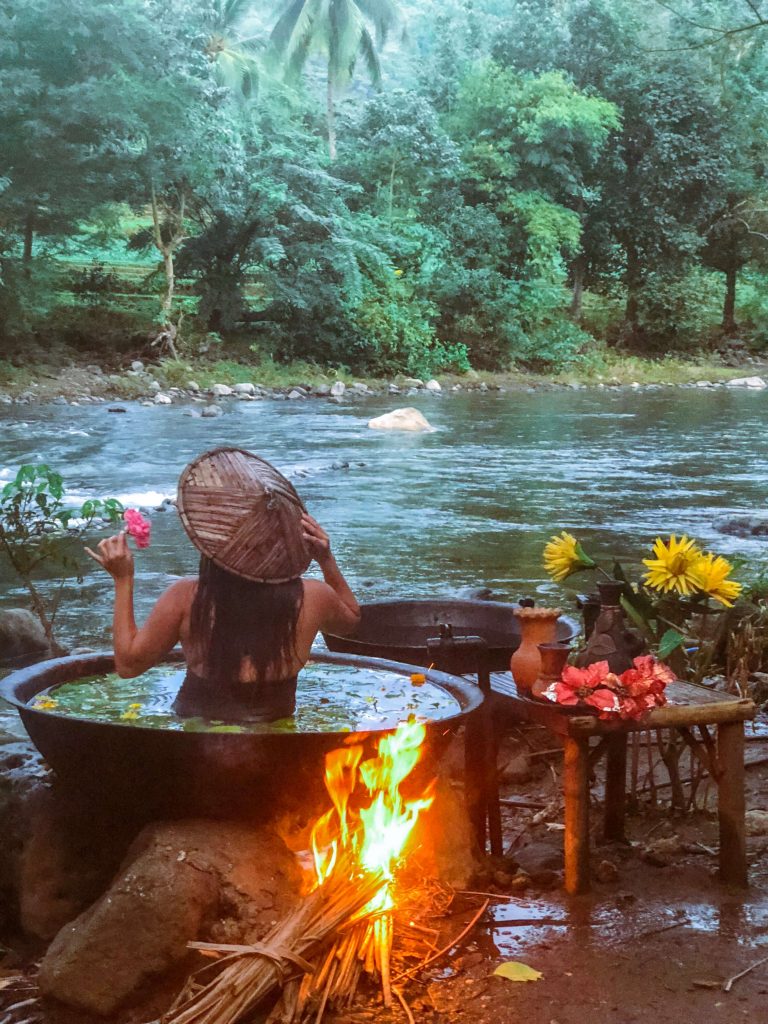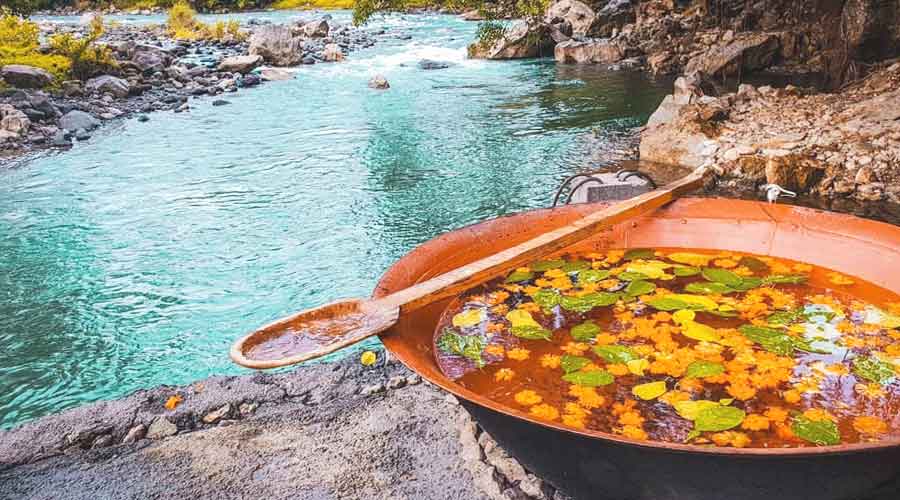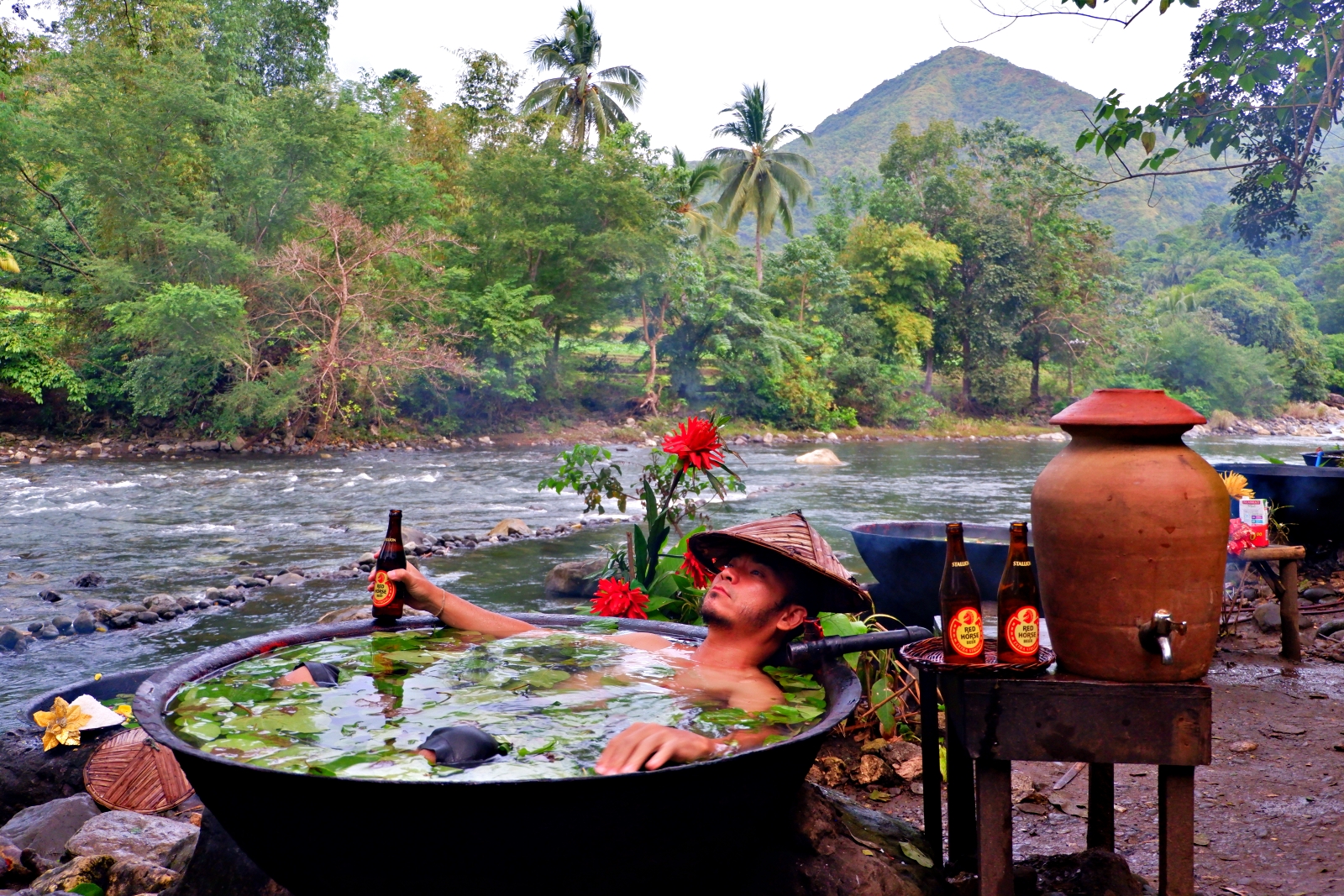A ‘kawa’ refers to the huge cauldron that was traditionally used in sugar-making, specifically to process molasses. But since technology and advanced methods came along, these giant pans were replaced by sugar mill factories. Local residents found a way to reuse the pans, turning them into big tubs for hot baths (referred to as kawa baths). It’s a perfect way to refresh oneself and experience being ‘cooked alive’ for the first time!
.jpg)
But don’t worry, that’s just a euphemism for your extraordinary experience. You won’t get burned or scalded. While they will literally put you on fire, it won’t reach a point where it becomes dangerously hot for you.

It takes time before someone is able to take a kawa bath, usually about 45 minutes to an hour preparation. First, the personnel will heat the kawa by lighting up the fires using pieces of wood and dried bamboo. As the water gets slowly heated to a desired temperature, the personnel would then add herbs, fragrant leaves, and flowers. The water steam subsequently gives off a wonderful aromatic scent that’s invigorating to the mind and senses.


Before taking the kawa bath, slowly enter the giant pan of garnish so your body can adjust to the temperature. Once fully immersed, just sit back, relax and enjoy the soothing feeling that the steaming water brings. The warm waters of a kawa bath usually bring relief to aching and tired muscles.

The most famous kawa baths in the Philippines take place in the town of Tibiao in Antique province, which is part of Panay Island in the Visayan Region. Antique’s neighboring provinces are Capiz, Iloilo, and Aklan – which also includes the world-famous island Boracay.
According to Culture Trip















